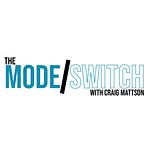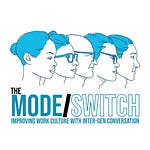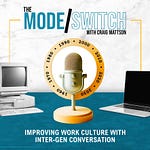Do your clients’ responses to your emails sometimes feel like UFOs? What in the world was that—a garbled datum from Mars? How in the world do you even start a response email?
“I hope this email finds your planet well”?
First things first. We don’t call them Unidentified Flying Objects anymore. We call them Unidentified Aerial Phenomena. (Sheesh, get your aliens right already.) Lately, the chatter about UAPs shows up even in The New York Times, The New Yorker, and 60 Minutes, each of whom feature Navy video footage of disturbingly speedy aerial phenomena.
What bothers some astrophysicists about these UAPs is akin to what bothers you about your clients. The question is not whether aliens exist, but how often we should communicate with them. Dr. Douglas Vakoch recommends overcommunication. He argues that aliens speeding by our galaxy could surely help us humans out. They’re likely to be advanced civilizations and—let’s just say our species hasn’t been doing well for a hot minute. But Dr. Michio Kaku of the City College of New York argues that attracting more extra-terrestrial attention “would be the biggest mistake in human history,” spelling the end of our planet’s galactic independence. (You can explore these positions more deeply by delving into a delightfully alien-focused episode of The Argument podcast.)
I thought of this question about aliens and communication after interviewing Olivia Winkowitsch about her work as a production manager for a Los Angeles-based entertainment advertising agency. You may not have heard of Liv’s company, but you’ve probably heard of their client projects—Scenes from a Marriage, Uncle Frank, Westworld. You may also have seen key art—an industry term for exquisitely crafted promotional imagery—on movie posters and on the “continue watching” grids you’re always scrolling through on streaming services.
During our interview, Liv told me that she once requested a client to send a copy of an original vector image, an expensive graphic that maintains its quality at any size. The request seemed easy to fulfill. But what arrived back in Liv’s inbox wasn’t even close to what she needed. The file, in fact, proved to be a video. Liv pressed her face into her hands and shook her head slowly.
How could a client who has risen so loftily in the ranks of Hollywood—an industry apparently built on competency with visual imagery—be so dense as to send an mp4 instead of a JPEG?
You and I would probably recommend a simple repeat of the request. It makes sense, right, to just send a quick note back and say, “Hey, you sent this, and we actually need that.” During the pandemic, after all, virtual meetings and digital exchanges have made overcommunication essential for eliminating misunderstanding with remote clients and colleagues.
But Liv has faced similar misunderstandings before. The taken-for-granted wisdom of her industry is to say that, nope, you should never go back to the customer to ask for anything. If you, do you’ll regret all the extra work entailed. The industry nope here resembles the counsels of Dr. Kaku above in its assumption that clients are always zipping like aliens through the hyper-space of everyday messaging. The fact that they are mostly oblivious to your company is a good thing. If your company does cross the client’s mind, they’re likely to turn into a Death Star, bombarding your agency’s little planet with expensive alterations to their original requests.
All this takes us back to the question we started with: how do you communicate with clients without generating more space junk than you have time to dodge? Here are three suggestions:
Design every communication as an act of translation. Misunderstanding can be enormously irritating, especially when your clients sound, at least to your ears, like they’re saying, “Greetings, earthlings.” Look, they’re not being rude, and they’re not little green men. They’re just using different guild vocabularies. Think about your experience even within your organization: the language used by marketers varies hugely from that used by graphic designers, which diverges just as sharply from that used by executives. (And I haven’t even mentioned HR.) So, don’t be surprised if your clients speak in still other dialects. In this case, a deft translation on the front end will prevent confusion from a client not conversant in vector-imaging or file-sharing.
Treat your medium as a message. It may also be that clients aren’t so much confused as overwhelmed. In today’s attention economy, as Herbert Simon famously pointed out, the great shortfall is concentration. In such an environment, misunderstanding your email may indicate that your client simply has 560 other emails to respond to. Dealing with that overwhelm may require you to switch your medium. A phone call instead of a text. A handwritten note instead of an email. A stop-by visit instead of a direct message. Switching up the mode like this shows the wisdom in the old saw that what’s said matters less than how it’s said. Marshall McLuhan was right about the medium being the message. You can’t just go all Spinal Tap on people, turning the message up to eleven, in the vague hope that your preferred but ineffective medium will somehow do the job.
Trust that your unobvious resources are sufficient. I have a hunch that the worried astrophysicist Dr. Kaku assumes that we live in a universe whose fundamental reality is scarcity: Don’t broadcast to aliens, because they’ll steal our stuff, in other words. The commonsense of Liv’s industry seems to follow a similar logic: Don’t overcommunicate with clients, because they’ll create more work and we’ll lose profits. But what actually happened was that Liv ignored the fear of scarcity. She saw an unobvious possibility in her team’s own capacities and discerned that they could recreate the vector image from that silly video file the client had sent. It would be painstaking work, yes, but it would also be a testament to the sheer skill of her team. The choice was costly: it took a day’s work that stretched deep into the night. But the choice was also generous. Their actions suggested that, within the collective resources of the company, there was sufficiency for the work.
You’re right: sometimes emails from clients make the search for extra-terrestrial intelligence sound simple. Those messages make you want to blast—er, delete—the transmission. You might even justify your choice on the grounds that, well, no one’s ever helped by overcommunication. It’s wasteful and exhausting and prone to error.
But can you concede that customers aren’t any weirder than the rest of us? Most days we are all aliens to each other, pretending to a humanness we only occasionally live up to. And, as long as I’m catechizing, let me ask you another question: is over-communication actually avoidable? We earthlings are extravagantly social creatures. Overcommunication is what we do. (Which is why deep space is currently saturated with waves of I Love Lucy episodes. Eventually, extra-terrestrial binge-watchers will catch up on Star Trek and Battlestar Galactica.)
Can we follow Liv’s example and recognize innovative workarounds in our workplace community? Sharing those workarounds to oblivious clients can take some grace, for sure. But then, that’s all we ever have. The capacities and resources enjoyed in organizational community are not ours. They’re gifts that we’re lucky enough to discern and to tend and to share, especially with the aliens.
Who’s Saying Good Stuff
Vakoch and Kaku argue about aliens here.
T. S. Eliot’s “The Journey of the Magi”
Denis Villeneuve - Arrival
After you listen to the astrophysicists duke it out, I encourage you to check out Eliot’s poem about the three wise men in the New Testament story, which is also, and perhaps surprisingly, about alien communication across vast spaces. Finally, I know of no better filmic representation of the intersection of communication theory and interstellar communication than Villeneuve’s movie Arrival.
X’s and Zs: An Intergenerational Glossary
Here’s an edited transcript of a follow-up call with this week’s Mode/Switch guest.
Craig: Liv, what does stan mean? I have looked this up so many times and every time I forget it.
Liv: So, stan is like, We stan something. You give someone a standing ovation.
Craig: Do we stan for an important person? I mean, do you stan for the CEO?
Liv: CEO? They’re the G.O.A.T.
Craig: How’d we get on farm animals? Never mind. What about an e-boy?
Liv: It’s this generation’s version of the scene kid.
Craig: I remain in the dark.
Liv: In the 90s, there was goth and emo. And then, in my generation, the scene kids were the first people I knew who had friends they only knew online. They have very dark hair, very swoopy, a lot of piercing, a lot of black clothing, very baggy. One of my friends wanted one of those dangly earrings with a cross on it, and that's very like an e-boy.
Craig: The degree of nuance here is stunning.
Liv: One thing still confuses me.
Craig: Just one thing?
Liv: For about a month, there were all these comments on Tik Tok, using a chair emoji. Not a laughing-crying face, just a chair. It wasn’t clicking for me. But if someone tells you about it, please let me know.
Craig: Join us next week on The Mode/Switch. All your chair emojis answered.
Two issues in—this is starting to feel like a thing, huh? Let me know what this article (or last week’s) made you think of and your reaction! - Craig













